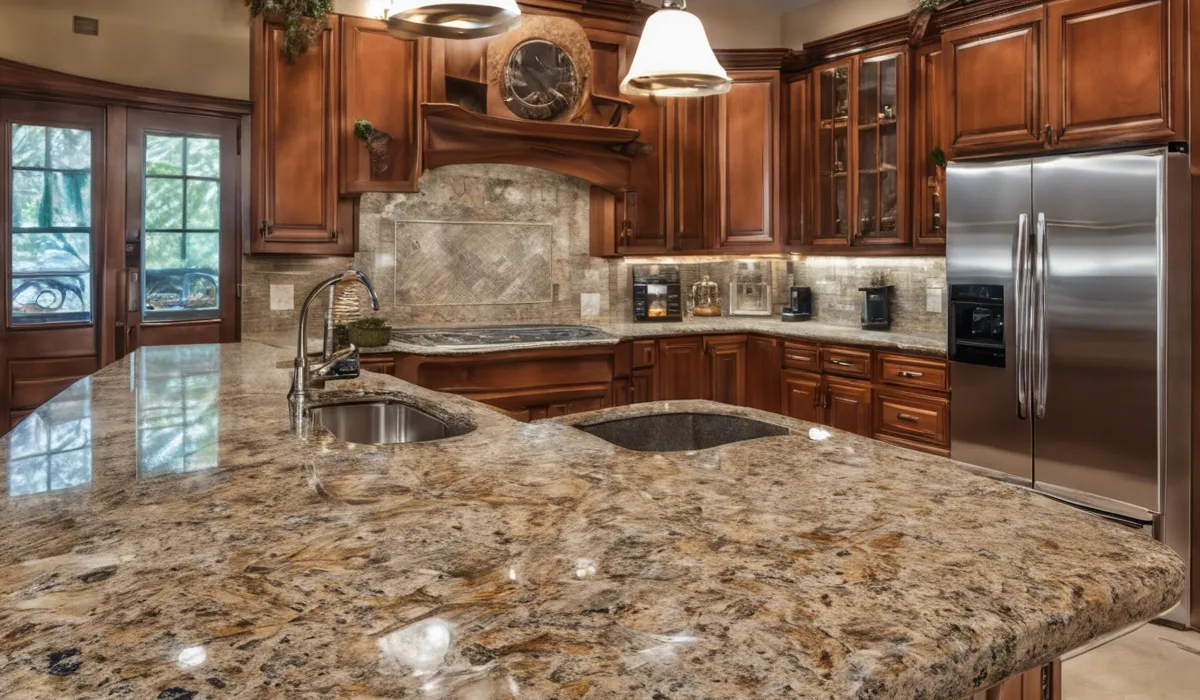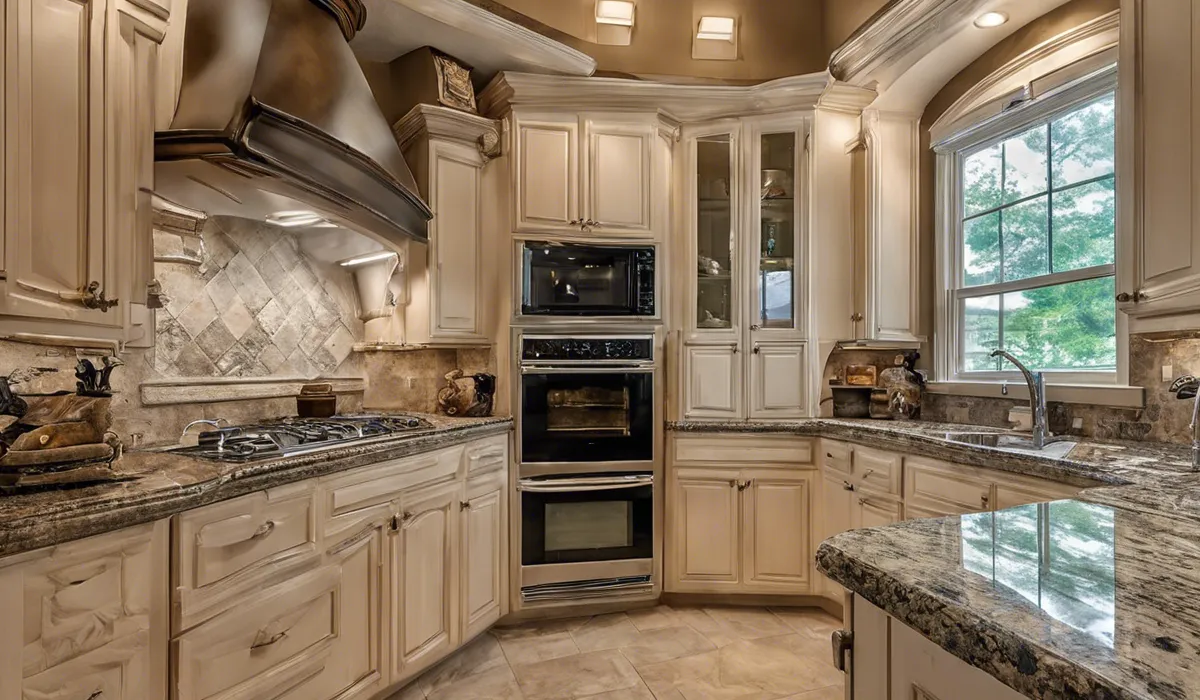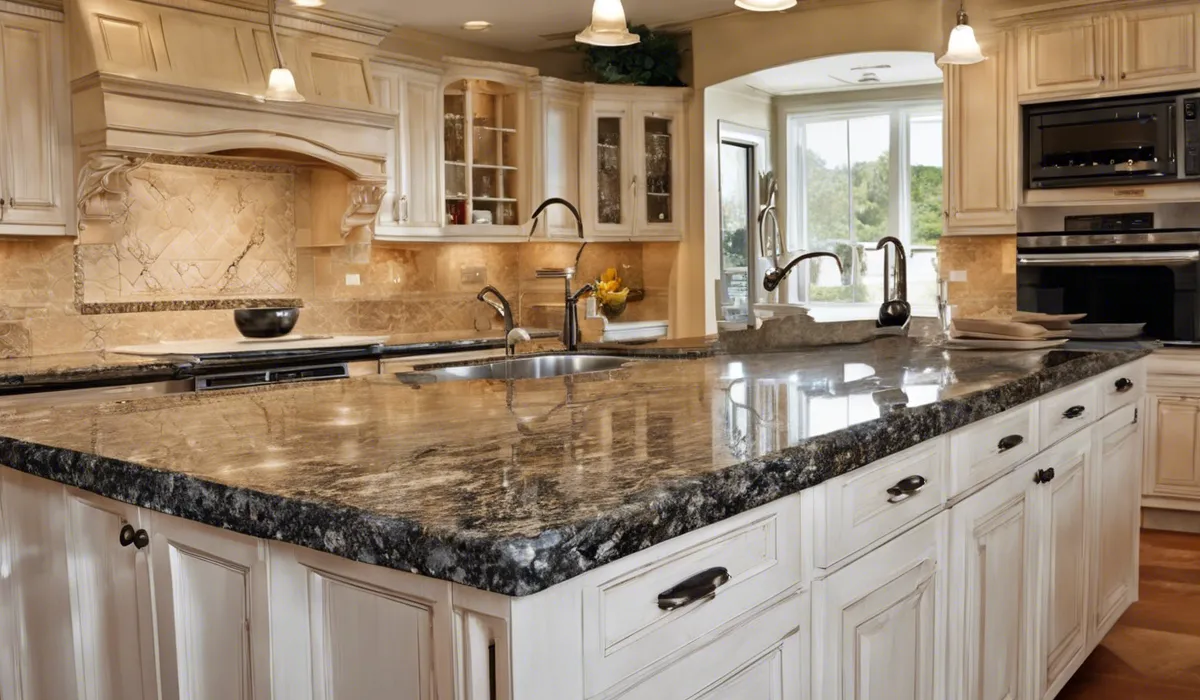To remove mold from a granite countertop, create a paste of baking soda and water. Apply to the moldy area and let it sit for a few minutes. Gently scrub with a soft brush, rinse thoroughly with water, and dry the surface completely.
Identification and Safety Precautions

Identifying Mold on Granite Countertops
Mold on granite countertops can be a sneaky intruder. It often starts as small, dark spots or patches that can be green, black, or even white.
These visual characteristics are your first sign that mold is present. You’ll typically find mold in areas with excess moisture, such as near sinks or in corners where water may have pooled.
It’s crucial to spot these signs early on to prevent the spread and potential health hazards of mold.
Safety Measures Before Removal
Before you dive into mold removal, you need to take proper safety measures. Equip yourself with gloves, a mask, and goggles to protect your skin, lungs, and eyes from mold spores.
Additionally, ensure that the area is well-ventilated to disperse any airborne spores that may be released during cleaning.
Natural and Chemical Mold Removal Methods

Natural Mold Removal Solutions
For those who prefer eco-friendly cleaning, natural mold removal solutions are an excellent choice. A simple vinegar solution, for instance, can be effective against mold.
Just mix equal parts water and white vinegar, spray it on the affected area, let it sit for a while, and then wipe it clean. This method is safe for granite and can kill a good portion of the mold.
Another option is creating a baking soda paste. Combine baking soda with water to form a thick paste, apply it to the moldy spots, and let it sit for a few minutes.
This mild abrasive will help lift the mold without scratching the granite. Afterward, gently scrub with a soft brush, rinse thoroughly with water, and dry the surface completely.
Hydrogen peroxide is also an ally against mold. Apply it directly to the moldy area using a spray bottle or a soaked cloth.
Let it bubble for a short period before wiping away the mold. This method not only cleans but also disinfects the surface.
Chemical Mold Removers
If natural methods don’t do the trick, chemical mold removers are another option. There are commercial mold and mildew removers specifically designed for stone surfaces.
When using these products, follow the instructions carefully and apply them as directed, often with a cloth or sponge.
While effective, these chemicals require you to take precautions, like working in a well-ventilated area and wearing protective gear.
Maintenance and Prevention Tips

Daily Cleaning Routine for Granite Countertops
Keeping your granite countertops mold-free starts with a good daily cleaning routine. Use safe cleaning agents like mild dish soap diluted in water for regular use.
When wiping down your counters, use a soft cloth and make sure to dry the surface thoroughly to prevent water spots and mold growth.
Preventive Measures
Prevention is always better than cure. To keep your granite in top shape, ensure it’s properly sealed to resist water and stain penetration.
Keep an eye on the humidity and moisture levels in your kitchen, using dehumidifiers if necessary.
And remember, whenever there are spills or stains, act quickly! Wipe them up immediately to prevent the chance of mold taking hold.
FAQs About Removing Mold from Granite Countertop
What materials do I need to remove mold from my granite countertop?
To remove mold from a granite countertop, you will need baking soda, water, a soft brush, and a cloth for drying.
How do I make a mold-removing paste for granite countertops?
Create a paste by mixing baking soda with a small amount of water until it reaches a spreadable consistency.
How long should the baking soda paste sit on the moldy area of the countertop?
Let the baking soda paste sit on the moldy area for a few minutes before scrubbing.
What is the best way to scrub mold off a granite countertop?
Gently scrub the moldy area with a soft brush to avoid scratching the granite surface.
How should I dry my granite countertop after removing the mold?
After rinsing thoroughly with water, dry the surface completely with a soft, clean cloth to prevent water spots and further mold growth.
Final Thoughts
To tackle mold on granite countertops, a simple paste made from baking soda and water is effective.
After applying the paste to the affected area, let it sit briefly before gently scrubbing with a soft brush.
Following this, rinse the area well with water and ensure the surface is completely dry to prevent further mold growth.
